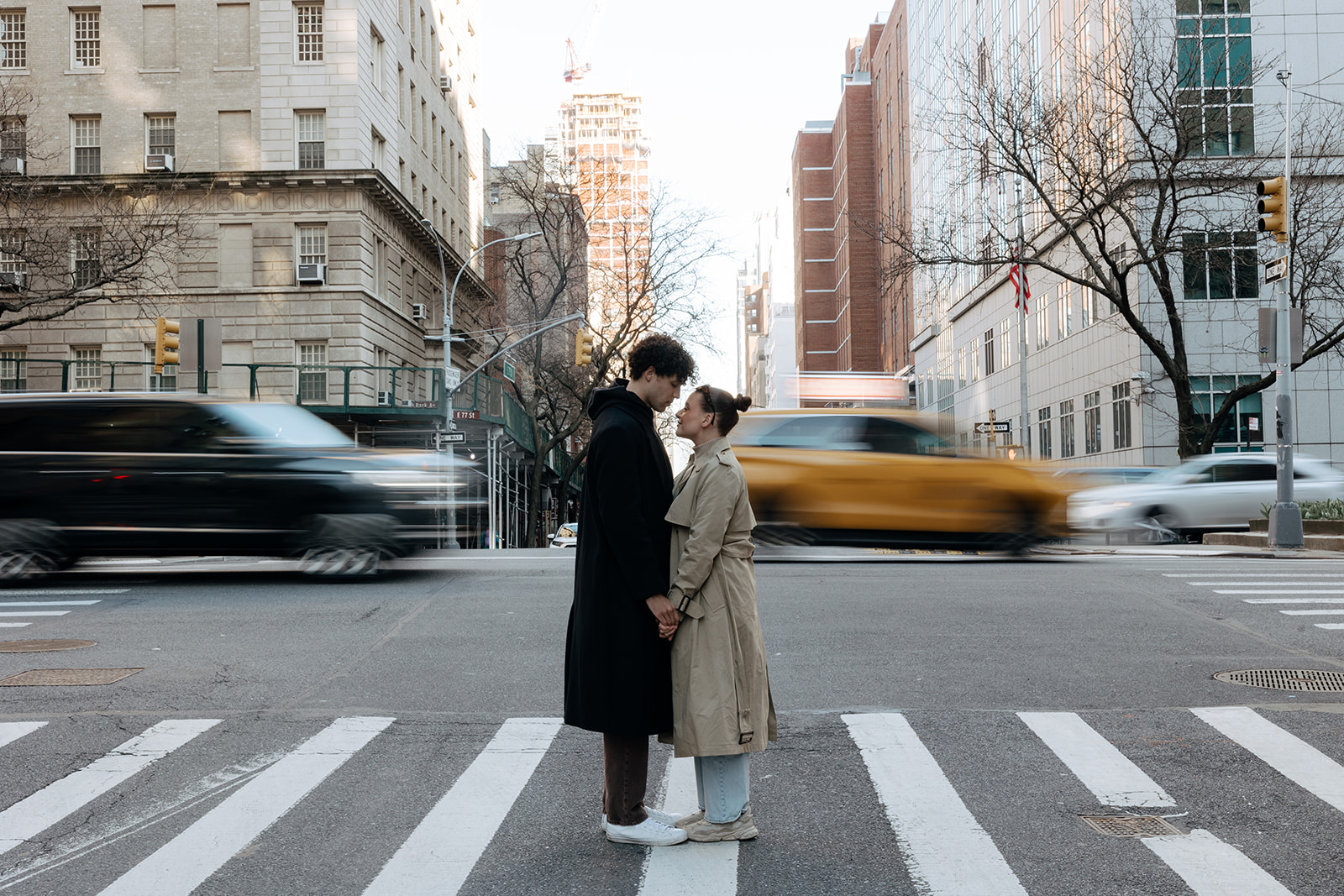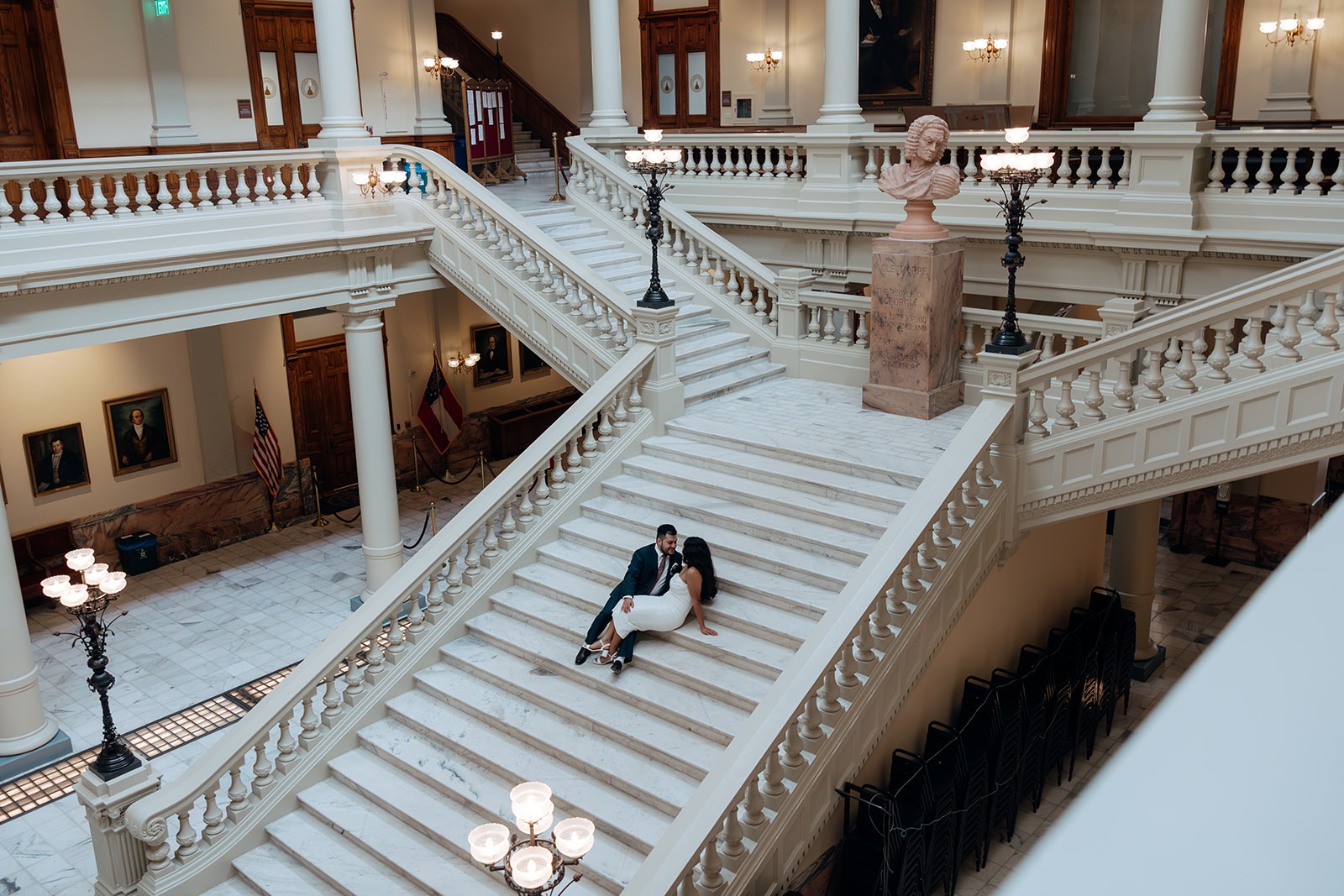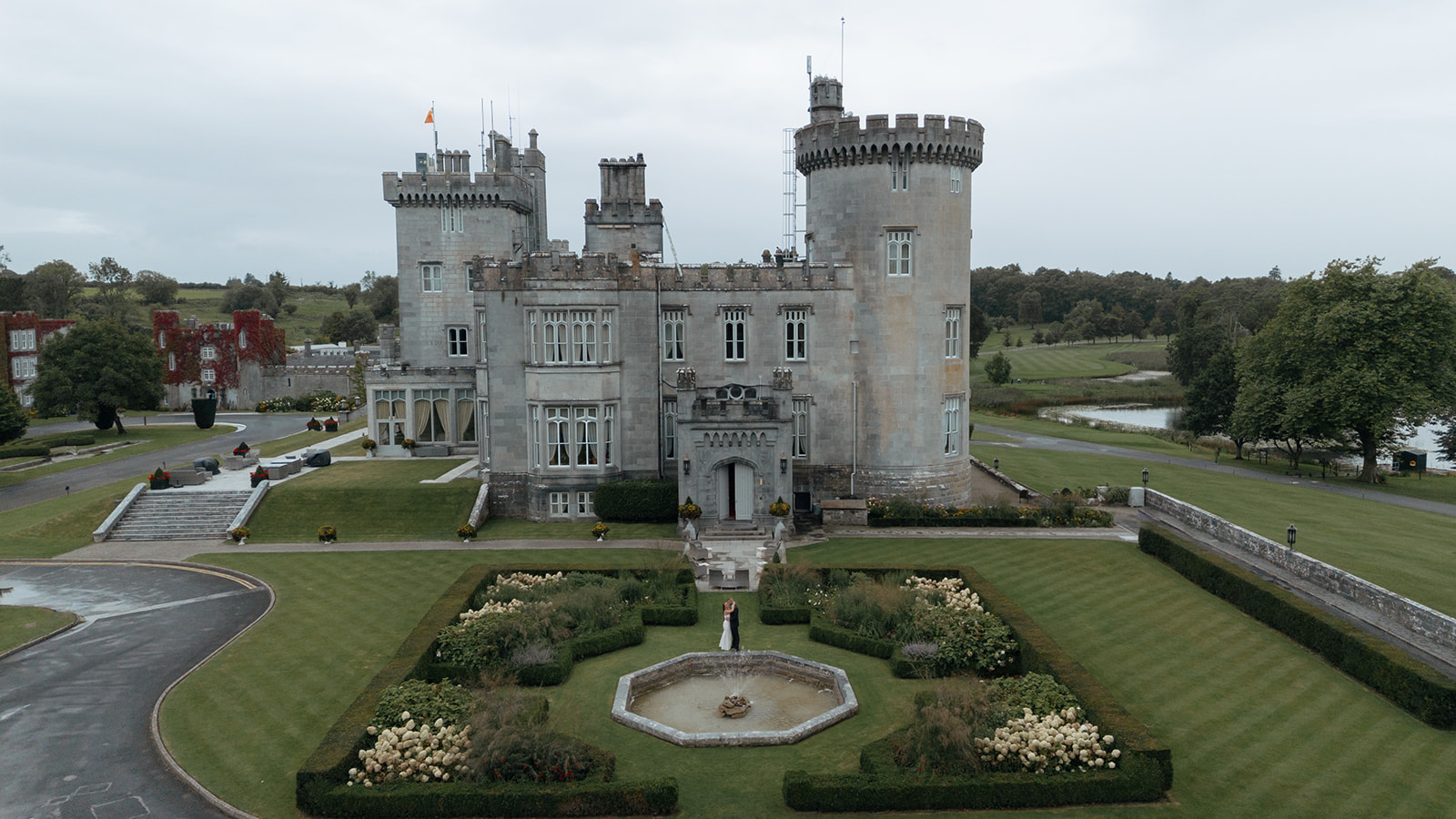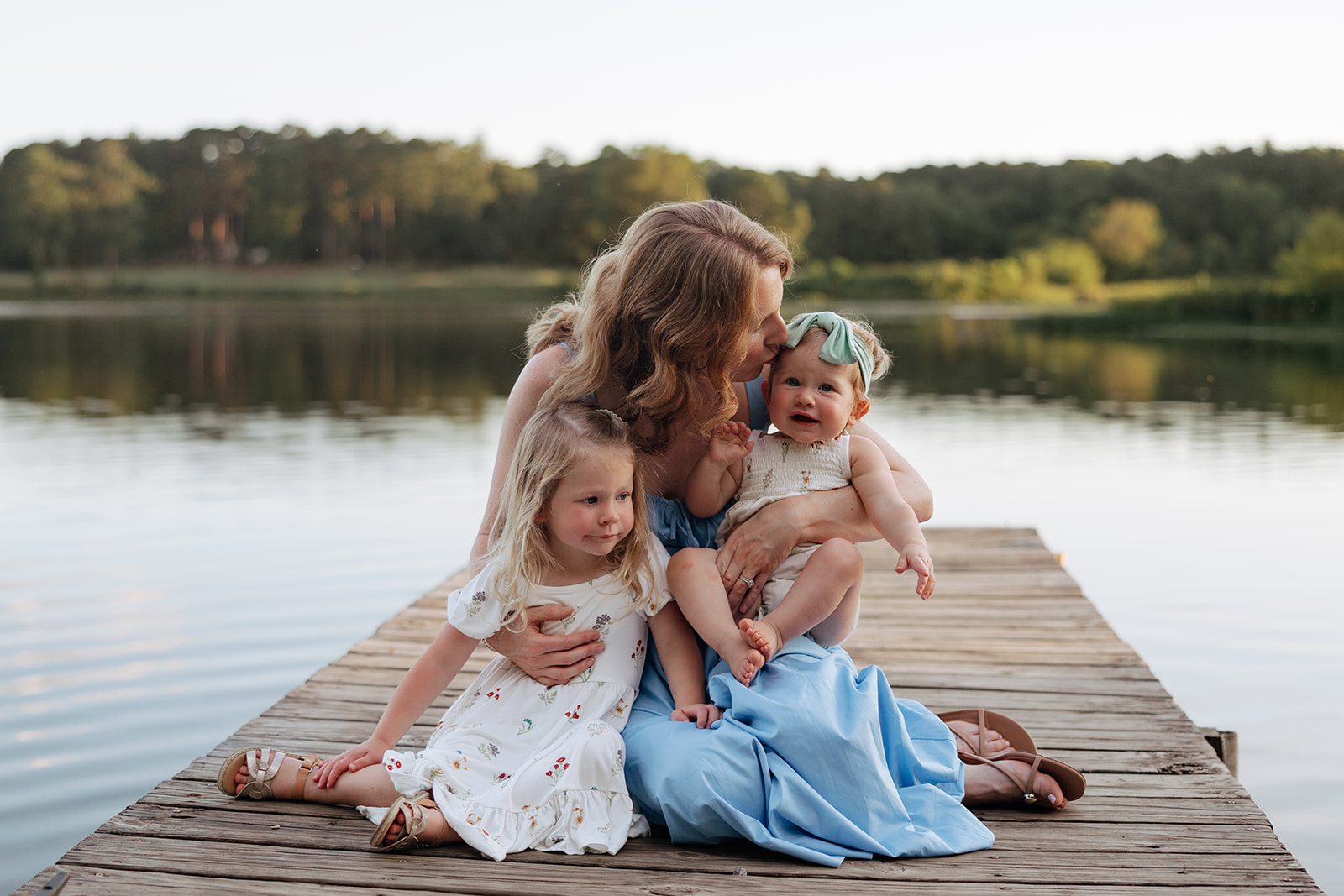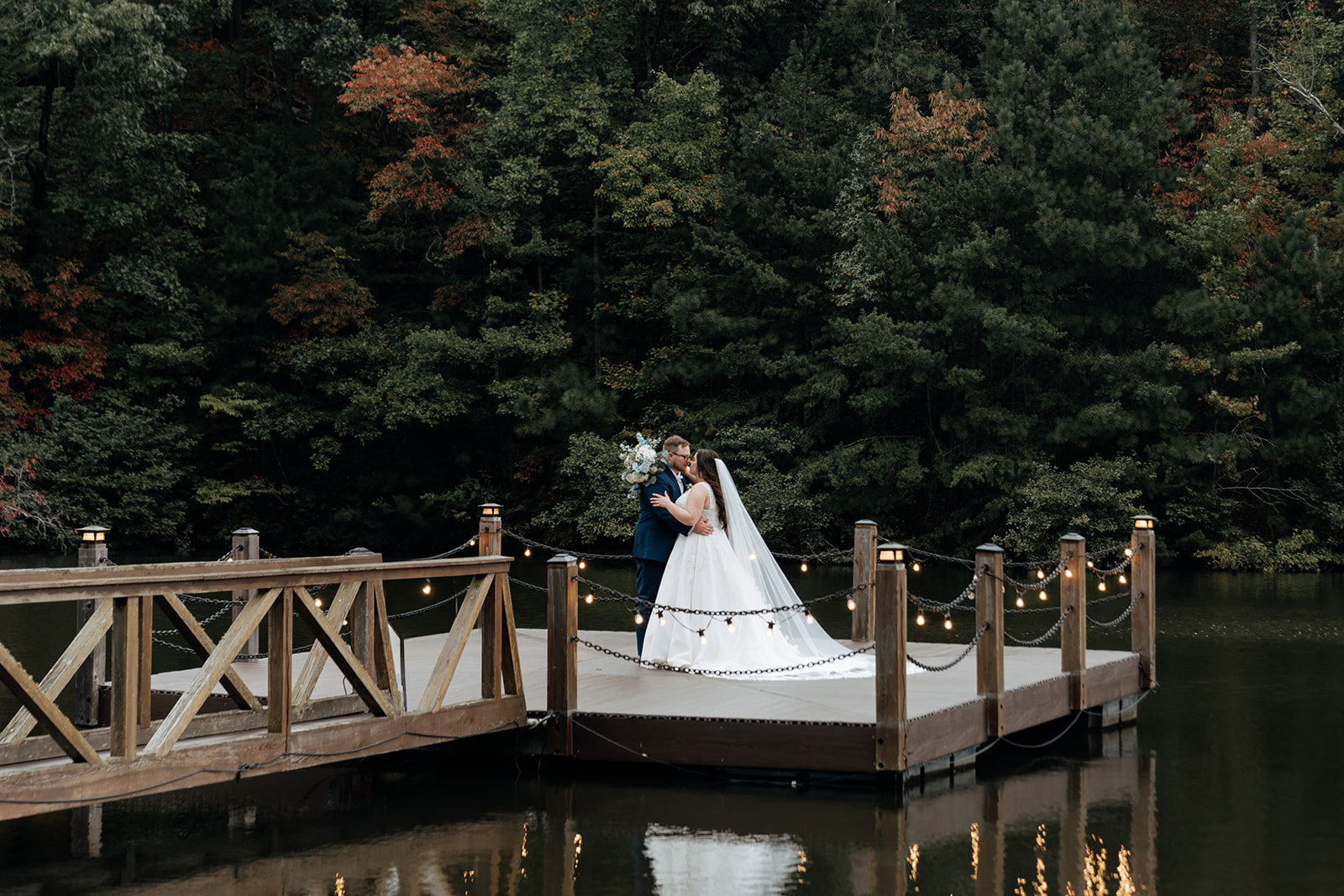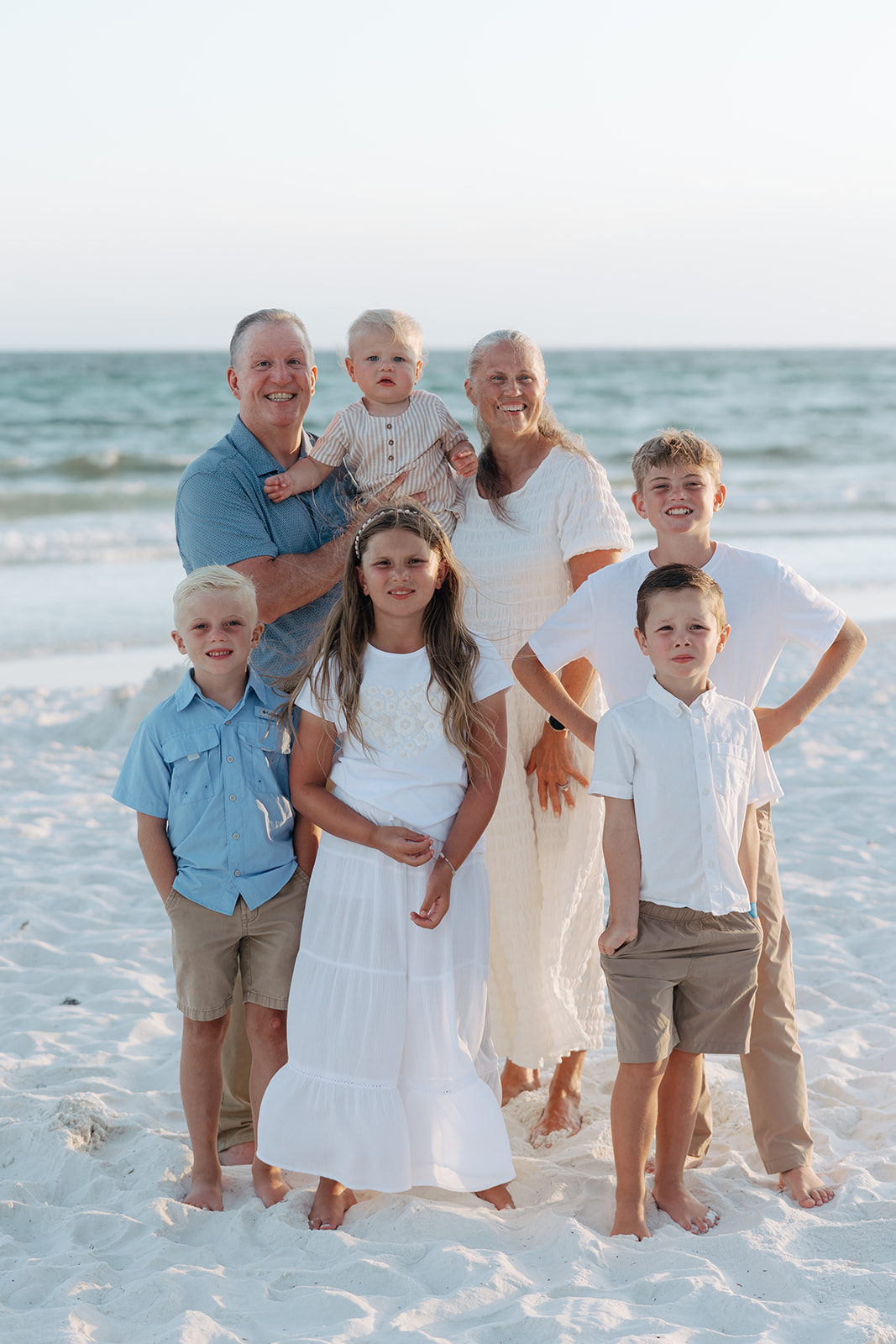
Dressing yourself in the morning is hard enough when you don’t have to stand in front of a camera and be your best self. Choosing what to wear to a photoshoot can trigger even the most confident fashionista to pull their entire wardrobe out onto the floor in search of the perfect outfit.
So if your nerves start to fizz when you think about what to wear, don’t worry. This is SO normal! Before you lose sleep to late nights spent online shopping–putting articles of clothing in your cart only to take them out again–let’s talk about what works and what doesn’t.
Be comfy!
Number one thing I want you to remember? Being comfortable is EVERYTHING. You should look and feel like yourself, first and foremost. Now, lets get in to learning about what to wear to your photoshoot.
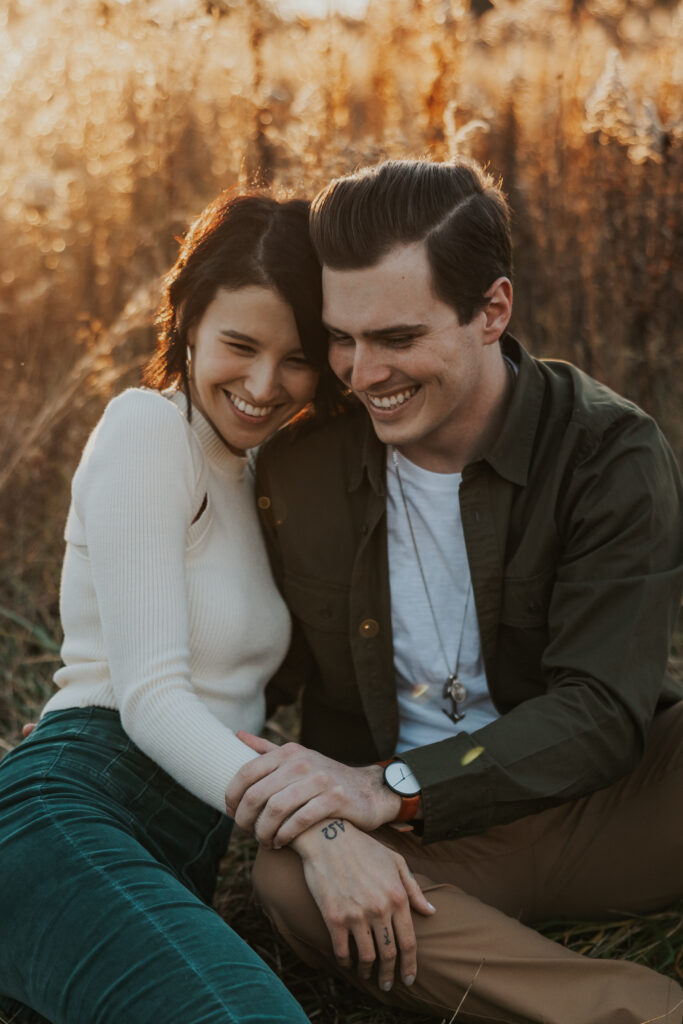
It’s not uncommon for people to want to shop for new, sparkly, fabulous clothes to wear to a photoshoot. And that’s totally fine – if that’s your jam. But let’s talk about comfort a little more. Do you think you’d be more comfortable in your favorite t-shirt and jeans or a new clingy little black dress? The best route is usually to go with something that’s tried and true. Something you know moves with you and hugs you in all the right places. Don’t get me wrong – it 100% does not have to be jeans and a t-shirt. You can glam it up a bit more if that’s the vibe you’re going for. But if authenticity is what you’re after, you’re going to have to show up as yourself. And if you want to capture this time of your life in all its glory, then it’s about the feeling of being in your own skin.
Match your outfit to the season and the location
If you’re wearing a fancy ball gown in your living room, the viewer might assume you’re going to prom. Don a little sundress in a snowy field and the viewer might suffer from a crippling amount of pity for you. You and I will be collaborating on telling your story together, so let’s get this right.
Plan your outfits around what you know about the conditions at the location we’ll be shooting at. You’ll want to be warm enough (or cool enough!), have pain-free feet, and look relatively native to your environment. For at home sessions, slip into your comfiest comfies and rock that! The idea is to authentically capture you wherever you are.
Think through your clothing choices logically based on location, vibe, and comfort level.
Incorporate texture and movement
Pick fabrics that move and flow with you. Ones that add a cozy texture, or get picked up by the wind, filter the late afternoon sun, and glow in the morning light. Natural fibers like linen, cotton, or wool are amazing. Avoid stiff-seeming garments with collars as they look a bit too formal and often get tucked in weird spots and need adjusting.
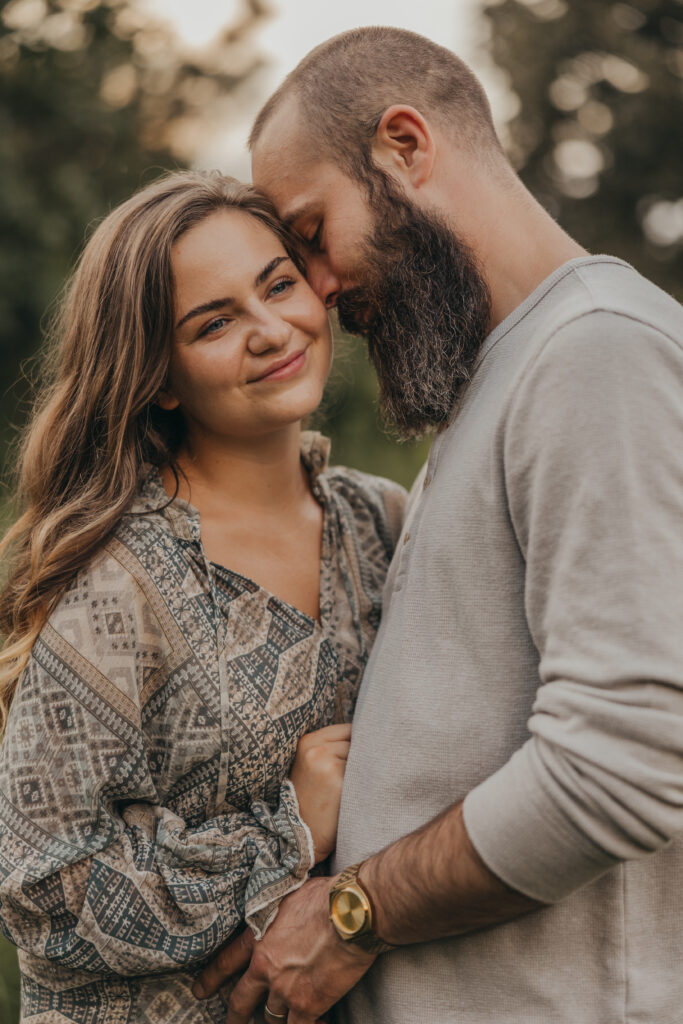
Color Scheming
Aim for neutrals, earthy tones, and metallics. These colors compliment the outdoor environment almost anywhere you go and look good as a printed, framed photograph.
Don’t get me wrong, I’m not advocating for a beige world of quiet and inoffensive colors. By neutrals, I just mean softer tones. Primary colors are incredibly striking, but can sometimes have the effect of detracting from the main subject (which is you). So for example, instead of electric blue, go for something closer to sky blue. Instead of bright orange, opt for ochre or apricot.
A rule of thumb here is to choose to either complement your natural environment or contrast it. A mustard dress in a deep green forest will look epic, whereas a bright pink, patterned dress doesn’t really fit in with your surroundings. It totally depends on what you’re looking for!
For families it’s best to keep your color scheme limited to four colors. You can choose one person to wear a feature color and have everyone else’s outfits complement that.
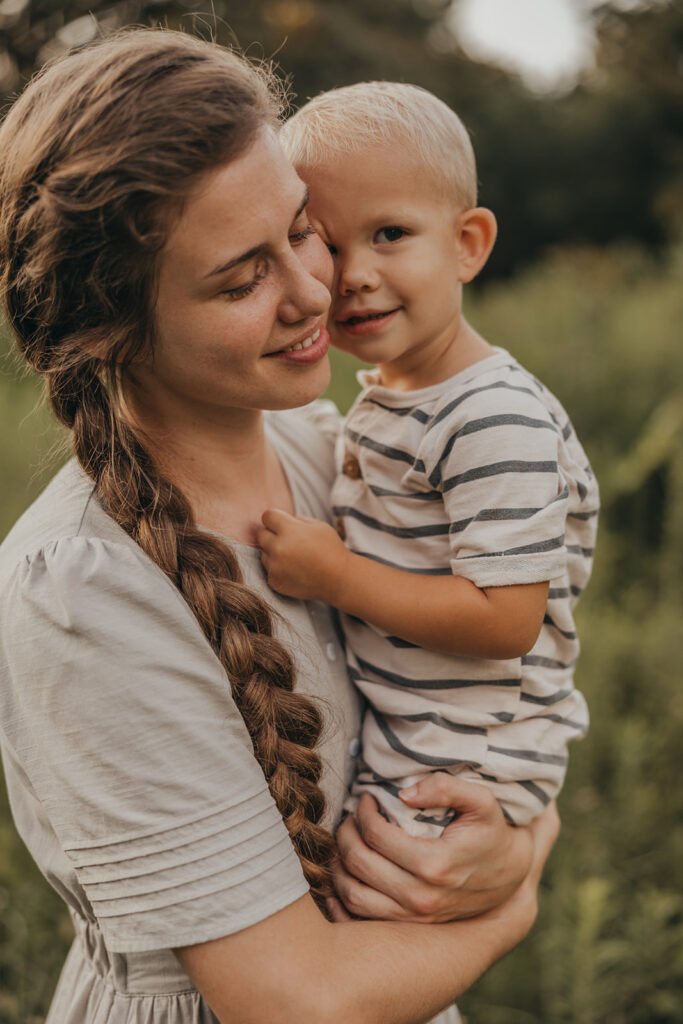
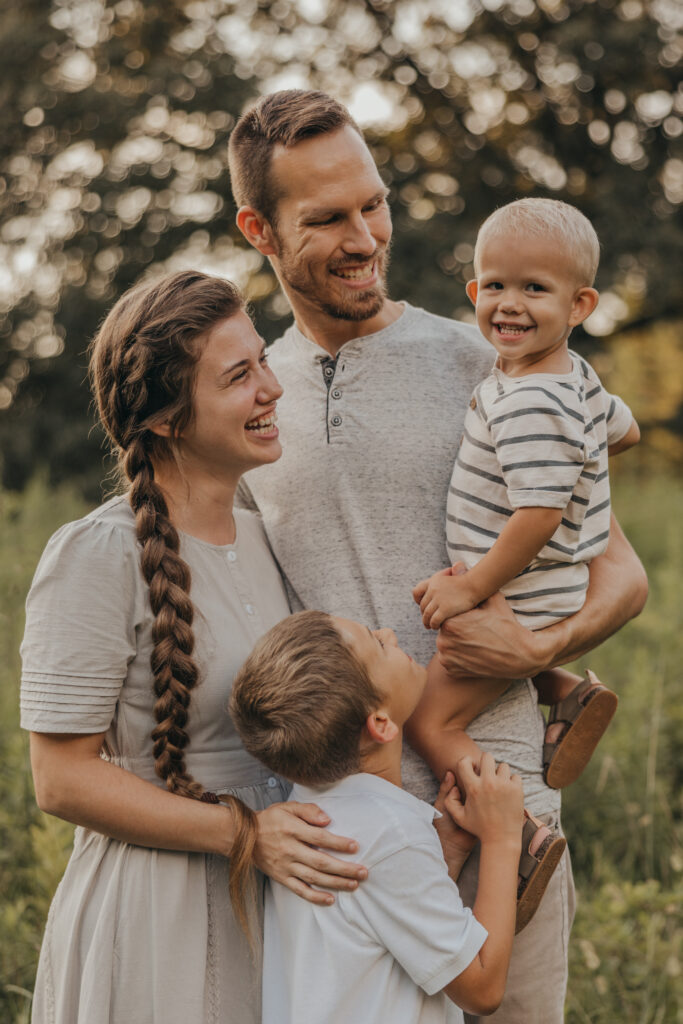
Color theory in action
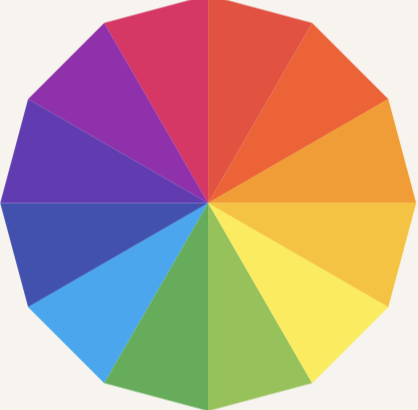
Remember the color wheel from 6th grade art class? Maybe you’ve gladly left your middle school days in the past, but the color wheel comes in handy when making good color decisions (aka planning what to wear). The color wheel is a great reference point when trying to figure out what colors look a bit weird together and what colors are a match made in heaven.
Complimentary colors
These colors, the ones that look incredible together, are called complementary colors. They complement each other and create a visual harmony. They’re salt and pepper, Bonnie and Clyde, peanut butter and jelly. Complementary colors sit across from one another on the color wheel (i.e. blue and orange, red and green, yellow and purple). Below are some examples that show us how complementary colors do special things for the big picture. The burnt orange and forrest green compliment each other perfectly!
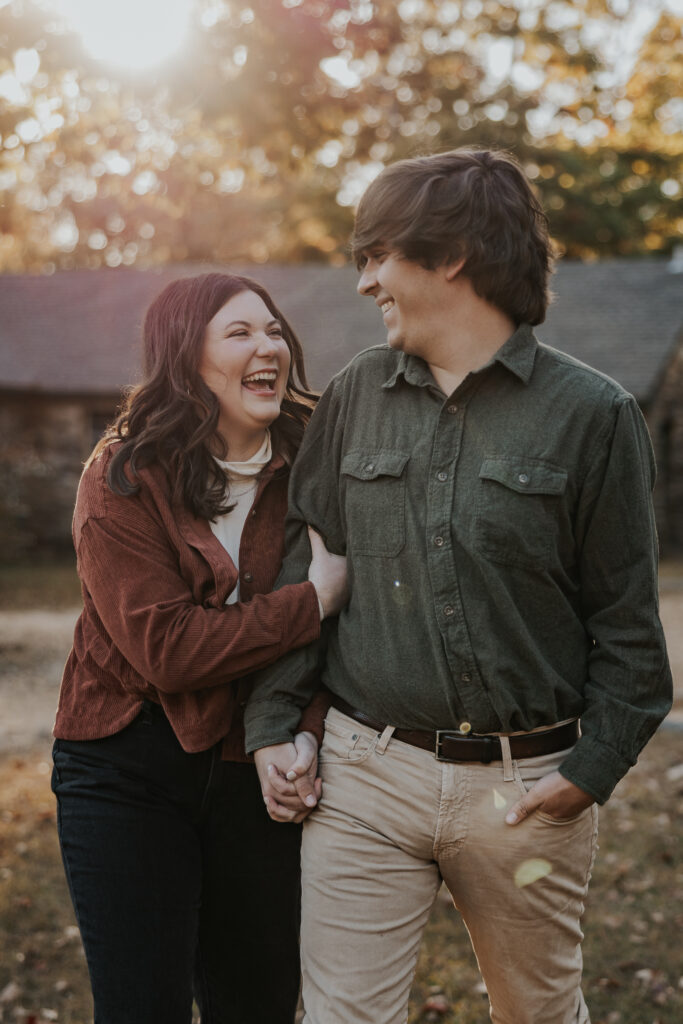

Analogous colors
But it’s not all about contrast. We’re all built so differently and respond to color combinations differently. For those less taken by the ‘pop,’ analogous colors could be the way to go. Analogous colors are next to each other on the color wheel, and can be quite soothing to the eye. Think of the jungle and all of the lush variations of green, or the ocean and the infinite hues of blue.
Here are some photos that illustrate how these analogous blue/green colors work so harmoniously together.
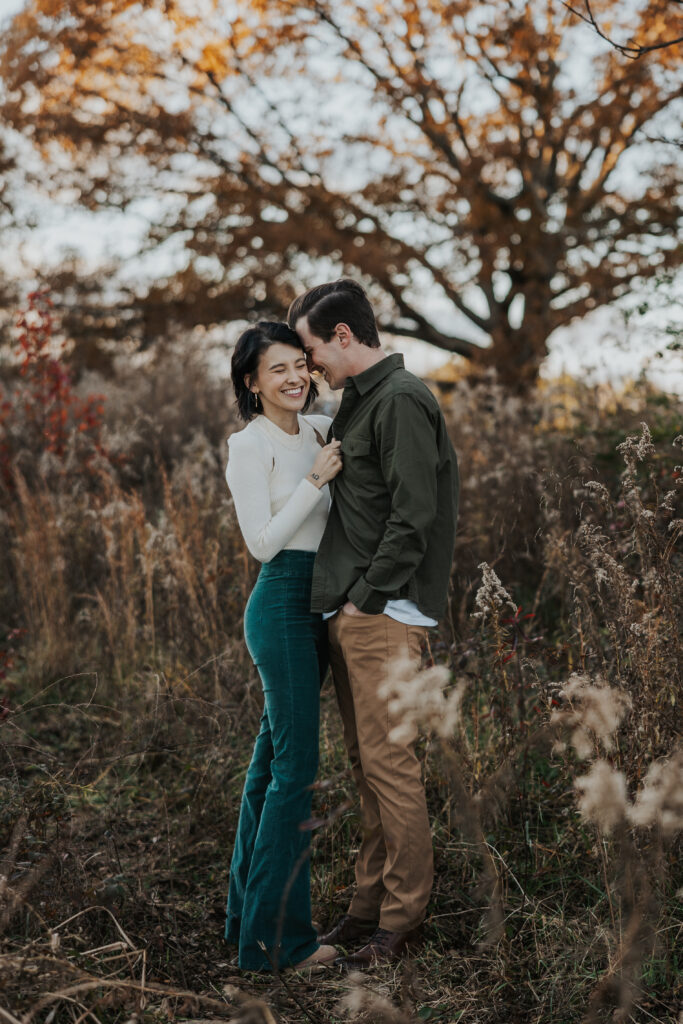
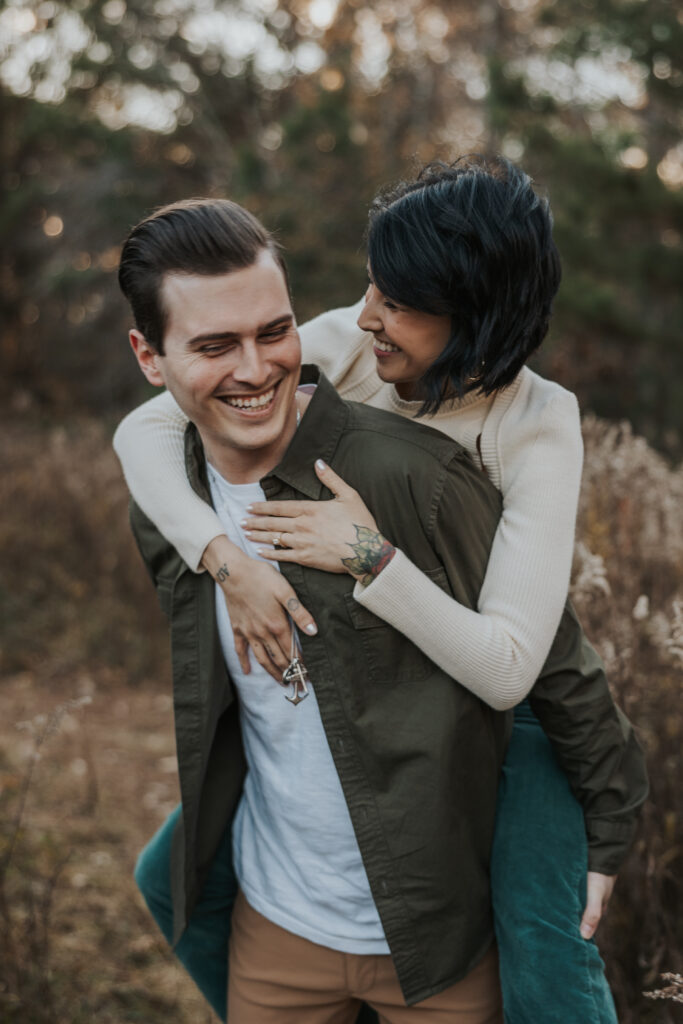
COMPLIMENTARY, GOOD! MATCHING, BAD!

When choosing what to wear to your photoshoot, you don’t want to create the illusion of being your partner’s siamese twin. When multiple people wear the same color, sometimes their matching outfits blend together so much that you can’t really see any of them properly. The viewer can’t tell where one person begins and another one ends. They turn into one uniform blob.
In order for the aesthetics of your photograph to really sing, you want to find complementary outfits that showcase a variety of colors, textures, accessories, patterns, and tones. Complement the other people in the photograph as well as your surroundings. The idea is to have everything look good together without everything looking the same.
Be careful with patterns & prints
Avoid large bold patterns as they often dominate the photograph and detract attention from your beautiful face.
Usually, subtle smaller patterns work best. Flannels or a light floral print are great when they complement the location. But less is definitely more with this one, try to limit yourself to one pattern at a time. Matching patterns is a tricky task, and it’s super difficult to do well.

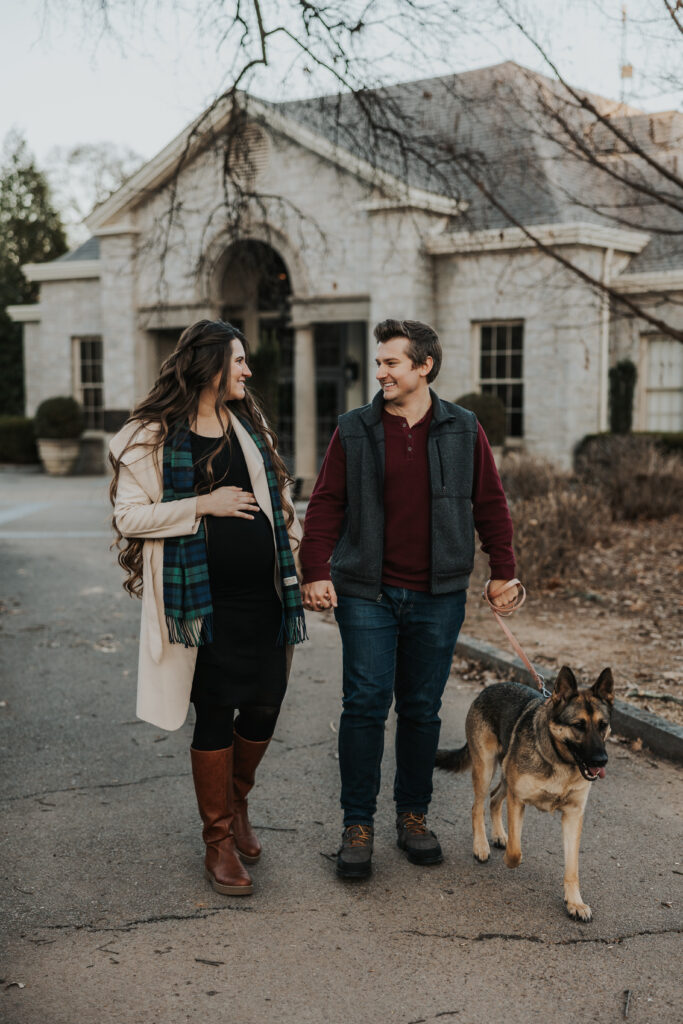
Layer up!
Wearing layers is great form (and function). Not only does combining layers and textures create more visually interesting photographs, but it preps you for all sorts of weather conditions, too!
Think jackets, cardigans, hats, scarves, tights, and headbands. Layers are an easy thing to add/take away throughout the session, allowing for more variation in your photos without changing entire outfits.
Outfit Changes
That being said, if you wish to bring a second outfit, GO FOR IT! Most photographers encourage this! It gives so much more variation to your gallery!
However, this is not recommended for sessions shorter than one hour.
Let’s Recap!
- Dress for the season.
- Dress for the location.
- Compliment – don’t match.
- Wear something comfortable that you feel like yourself in.
- Natural fibers and earthy colors look best in most settings.
- Avoid large prints, logos, and patterns (unless it helps tell your story).
- Throw some accessories like a hat or denim jacket into your bag
I hope this helps you decide what to wear to your photoshoot!
I hope you found this blog post helpful! If you are looking to book a session or need a photographer for your upcoming wedding, I would love to chat with you! Contact me here!
Recent Blog Posts
Atlantic Station Engagement Session | Aria & Austin
